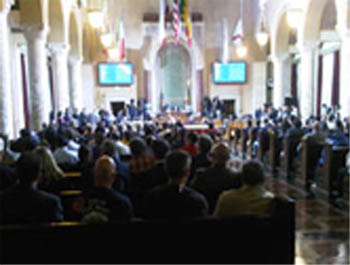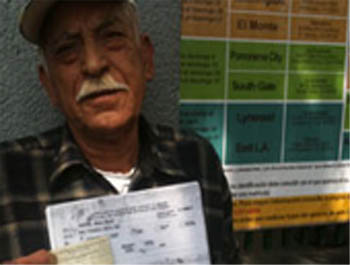Listen to an audio story by Annenberg Radio News:
—–
 Elaine Chew joined neuroscientist Aniruddh Patel, composer Peter Child and computer scientist Alexandre Francois Thursday night at the University of Southern California to examine the influence of language on music. The night featured scientific presentations, musical performances and interactive visualizations. The event was inspired by Patel’s research, which demonstrated that the music of British and French composers reflects the rhythm and intonation of their native languages.
Elaine Chew joined neuroscientist Aniruddh Patel, composer Peter Child and computer scientist Alexandre Francois Thursday night at the University of Southern California to examine the influence of language on music. The night featured scientific presentations, musical performances and interactive visualizations. The event was inspired by Patel’s research, which demonstrated that the music of British and French composers reflects the rhythm and intonation of their native languages.









 Dane had the idea for TruckIt Fest, which is a monthly gathering of food trucks where locals can come and sample all the tasty food in one place. As soon as he started advertising, he knew he was onto something.
Dane had the idea for TruckIt Fest, which is a monthly gathering of food trucks where locals can come and sample all the tasty food in one place. As soon as he started advertising, he knew he was onto something. “It was covered with asphalt and barbed wire and truck and machine parts and it was just pretty ugly,” Perry said. “But with a little creativity, some tenacity, some community support – well, this is where we are now.”
“It was covered with asphalt and barbed wire and truck and machine parts and it was just pretty ugly,” Perry said. “But with a little creativity, some tenacity, some community support – well, this is where we are now.” In her landmark work In Search of Our Mother’s Gardens, Alice Walker wrote: “What did it mean for a black woman to be an artist in our grandmother’s time? Our great-grandmothers’ day? Did you have a genius of a great-great-grandmother who died under some ignorant and depraved white overseer’s lash? Or was her body broken and forced to bear children (who were more often than not sold away from her)—eight, ten, fifteen, twenty children—when her one joy was the thought of modeling heroic figures of rebellion?”
In her landmark work In Search of Our Mother’s Gardens, Alice Walker wrote: “What did it mean for a black woman to be an artist in our grandmother’s time? Our great-grandmothers’ day? Did you have a genius of a great-great-grandmother who died under some ignorant and depraved white overseer’s lash? Or was her body broken and forced to bear children (who were more often than not sold away from her)—eight, ten, fifteen, twenty children—when her one joy was the thought of modeling heroic figures of rebellion?”  In the spring sunshine, lush greenery coats the garden. This season, vegetables can be found throughout the space, including artichokes, lemon grass and lettuce. Along the wood chip path, a cage of bunnies and compost stations can also be found. But the garden hasn’t always looked this way.
In the spring sunshine, lush greenery coats the garden. This season, vegetables can be found throughout the space, including artichokes, lemon grass and lettuce. Along the wood chip path, a cage of bunnies and compost stations can also be found. But the garden hasn’t always looked this way. “I’m really amazed at how anyone could be opposed to this,” Councilman Dennis Zine said. “How anyone in their right mind would be opposed to this project that’s going to bring jobs, economy and help downtown Los Angeles.”
“I’m really amazed at how anyone could be opposed to this,” Councilman Dennis Zine said. “How anyone in their right mind would be opposed to this project that’s going to bring jobs, economy and help downtown Los Angeles.”
 Miguel Bermudez, who is in his 70s, is one of hundreds of thousands of people who were part of the Bracero Program that allowed Mexicans to work in the United States. As part of that arrangement, a portion of the pay was withheld and was to be returned later.
Miguel Bermudez, who is in his 70s, is one of hundreds of thousands of people who were part of the Bracero Program that allowed Mexicans to work in the United States. As part of that arrangement, a portion of the pay was withheld and was to be returned later. In 1983, WAHA was founded as a neighborhood association. Noticing that the majority of people moving into the area had an interest in historic homes, WAHA morphed into a preservation advocacy group.
In 1983, WAHA was founded as a neighborhood association. Noticing that the majority of people moving into the area had an interest in historic homes, WAHA morphed into a preservation advocacy group.




